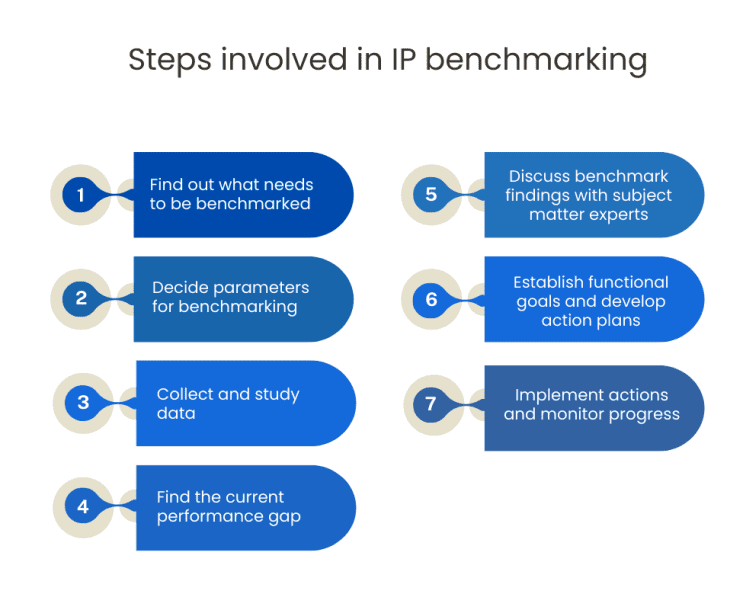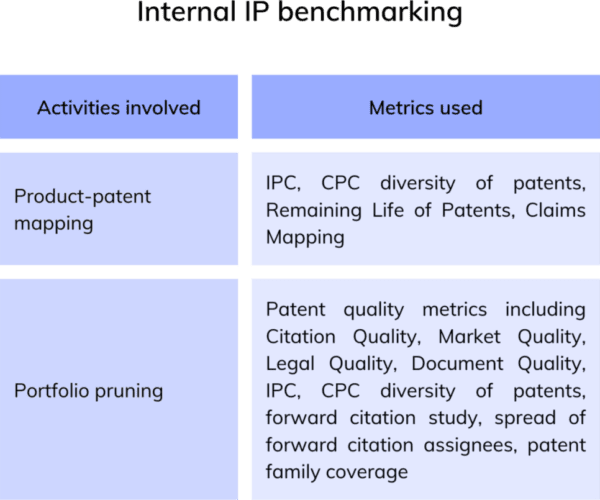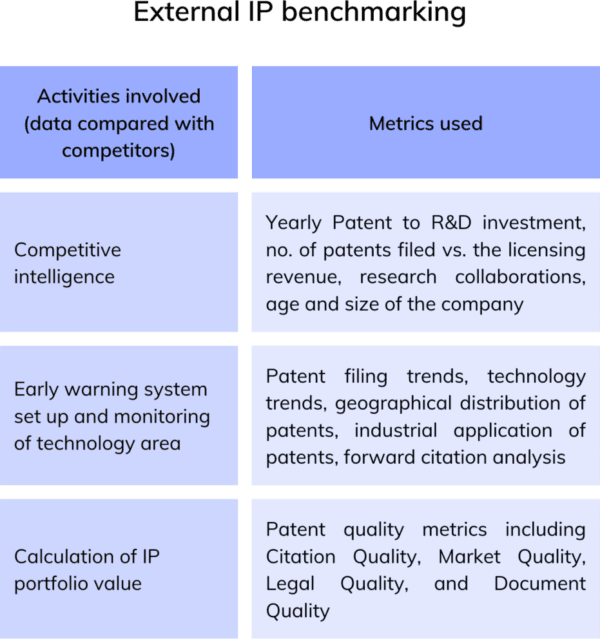Share
Share

IP benchmarking provides a deep understanding of competitive positioning, strengths, weaknesses, and inherent risks associated with your portfolio. It sheds light on where you can leverage a strong IP position for competitive advantage or identify areas vulnerable to threats from competitors. IP benchmarking should be done periodically (e.g. yearly) to ensure IP strategy is in sync with business strategy at all times. To be thorough, IP professionals, subject-matter experts and senior management should be involved in the exercise.
The figure below shows the steps for conducting a successful IP benchmarking activity:

Furthermore, IP benchmarking activities can be grouped into two types: internally-focused benchmarking and externally-focused benchmarking. Let us discuss these two types in detail.

Post deduplication, the original datasets have more Negatives than positives implying that positive matching records averaged more family members than the negative records in the original dataset. It is also worth noting here that an unbalanced dataset can have a varying impact on common AI metrics such as Accuracy (defined below).
1. Internally-focused IP benchmarking
This type of benchmarking is performed to evaluate the level of protection offered by your IP portfolio. You must map your patents against your current products and technologies to check if their unique aspects are well protected. For any unique technology, you must protect your core inventive step. Then you need to verify if surrounding or derivative technologies related to it are also protected. Basically, this helps verify if you have created a robust IP fence around your inventions. During the process, you may find that some patents are no longer directly related to your current products or focus areas. Additionally, a portfolio acquired via M & A or technology acquisition can also cause redundancies that must be identified.
Therefore, non-core patents should be reviewed in more detail by subject matter experts before you decide to abandon or sell/license them. By doing this, you save on maintenance costs and sustain a high-quality portfolio.

2. Externally-focused IP Benchmarking
This type of benchmarking helps assess an organization’s competitive position by comparing intangible assets with that of competitors. This informs you in advance about any opportunities or threats that exist in your competitive landscape.
Shortlist the key competitors who are similar to your company in terms of age, technology type, R&D activities, etc. Benchmark each competing or similar technology held by the competition on the basis of various qualitative and quantitative parameters. This will help you identify the strengths and weaknesses in your portfolio compared to your peers and give input on how to optimize IP investments for maximum returns. Moreover, you can also get insights on the strengths of technologies which have received maximum IP focus from the competition and the overall strategic direction of their R&D activities.

Conclusion
IP benchmarking is an effective exercise that syncs your IP and business strategy. You can use it to ascertain the business relevance of your IP assets and check if you are over-leveraging or under leveraging your IP protection. In both cases, the IP strategy should be modified so that maximum ROI can be extracted from your patent portfolio.




